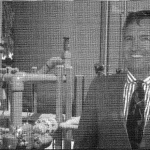Automatic Savings, Civil Engineering Magazine
Less Costly Benefits
The costs and benefits of automating environmental remediation systems can be generalized as follows:
New construction. If integrated into a new design, an automated system can be installed at near the cost of a traditional control system, and in some cases at a significantly lower cost. Although automated control system components cost more than their analog counterparts, installation is easier, which can offset material costs.
Existing system retrofit. If an existing monitoring or treatment system is retrofitted, costs are incurred in several areas, including engineering, construction and operator training. But once a system is automated, many benefits can be realized immediately.
Treatment precision. Unlike a human operator, the PLC monitors and adjusts system parameters several times every second rather than hourly, daily or weekly. This precision means that the treatment technologies are always running at peak efficiency, and the system is vigilantly monitored for alarm conditions, which is critical for regulatory compliance.
Consumables expenditure. A system that adds a chemical anti-scalant for an air stripper, for example, can use a PLC to continually monitor the chemical residual in the effluent water of the air stripper and automatically increase or decrease the amount of the chemical injected upstream to attain the desired level. The system automatically and immediately compensates for changes in flow rates and injection pump variations so that no wasteful overdosing occurs.
Waste removal expenditure. Traditionally, technicians change water filters on a set schedule. An automated system would alert an operator to change the filters only when the differential pressure across them reached a predetermined set point, usually the point at which the degradation in filter performance begins to adversely affect system operation. When used in conjunction with a voice-call alarm system, the PLC can notify an off-site maintenance technician that its time to change the filter.
System downtime. The PLC can be programmed to respond to alarm conditions in a way that keeps the system running. In addition, when an alarm condition occurs, the PLC can immediately notify an off-site operator of the condition. The operator can make an informed trip to the site or remotely access the system from a personal computer, make an adjustment and restart the system without a site visit.
Data collection. The system software can be programmed to collect and store process data as often as once per second.
Water levels can be recorded hourly, rather than during monthly site visits, providing more useful information. Daily summary reports can be generated in a word processing or spreadsheet format. This automatic data collection, when combined with preformatted documents that make real-time inquiries to the database, can dramatically reduce the time needed to generate routine monthly, quarterly and annual reports and can increase the quality and accuracy of the information contained in the reports.
Because the systems can be monitored and adjusted at any time or at any desired interval from a desktop computer with virtually no increase in cost system reliability and environmental compliance improve dramatically. If stringent regulations and stiff penalties for permit violations are part of the picture, improved compliance can be benefit enough to justify the cost of a retrofit. The high efficiency and reliability of automated systems mean that cleanup occurs more rapidly and O&M expenses may be lower.
Long-term operations and maintenance (O&M) costs for environmental remediation systems often dwarf engineering and remedial construction costs, but they don’t have to. By negotiating with regulators for adequate cleanup standards, reducing labor through automation, and standardizing environmental reporting and record keeping, site owners often can shut down remediation systems early or decrease long-term operating costs by 30% to 50%. Even a 10% reduction in O&M costs can produce enormous savings in the long run. Because automated systems can be monitored and adjusted at any time or at any desired interval from a desktop computer with virtually no increase in cost, system reliability and environmental compliance improve dramatically. In the end, the high efficiency and reliability of automated systems means that the approach to the cleanup level occurs more rapidly and can reduce O&M expenses.
©1998 Locus Technologies. All rights reserved.



